Table of Contents
Setting the Frame Frequency
Chapter 1 Overview
1-1 Features
1-1-1 Camera Features
1-1-2 VTR Features
1-1-3 Other Features
1-2 Example of System Configuration
1-3 Precautions
1-4 Using the CD-ROM Manual
1-4-1 Preparations
1-4-2 Reading the CD-ROM Manual
Chapter 2 Locations and Functions of Parts and Controls
2-1 Power Supply
2-2 Accessory Attachments
2-3 Audio Functions
2-4 Shooting and Recording/Playback Functions
2-5 Menu Operating Section
2-6 Time Code System
2-7 Warnings and Indications
2-8 Warnings and Indications on the Display Panel
2-9 Indicators in the Viewfinder
Chapter 3 Recording and Playback
3-1 About Cassettes
3-1-1 Loading and Unloading a Cassette
3-1-2 Preventing Accidental Erasure
3-2 Recording
3-2-1 Basic Procedures
3-2-2 Continuous Recording
3-2-3 Recording Good Shot Marks
3-2-4 Recording a Recording Start Mark
3-2-5 Starting a Shoot with a Few Seconds of Pre-Stored Picture Data (Picture Cache Function: with the HKDW-703)
3-2-6 Shooting Picture at Intervals (Interval Rec Function: with the HKDW-703)
3-2-7 Continuous Recording on Previous Cut
3-2-8 Searching for the Last Recorded Portion and Turning on Recording Pause Mode (End Search Function)
3-3 Checking Recording and Playback
3-3-1 Checking the Last Two Seconds of the Recording - Recording Review
3-3-2 Checking the Recording on the Color Video Monitor - Playback in Color
3-3-3 Checking the Camera Picture on the Viewfinder and/or Color Video Monitor
3-4 Recording the Recording Start Time Code onto the Memory Label - Tele-File
3-4-1 Recording the Recording Start Time Code onto the Memory Label
3-4-2 Recording a Tele-File Mark (OK/NG/KP) onto the Memory Label
3-4-3 Warning/Error Messages in Memory Label Operation
3-4-4 Confirming the Remaining Capacity on the Memory Label
3-4-5 Clearing Recorded Data
3-5 Freezing a Picture During Playback
3-6 Setting the Stand-by off Timer During Rec- Pause
Chapter 4 Adjustments and Settings for Recording
4-1 Adjusting the Black Balance and the White Balance
4-1-1 Adjusting the Black Balance
4-1-2 Adjusting the White Balance
4-2 Setting the Electronic Shutter
4-2-1 Shutter Modes
4-2-2 Selecting the Shutter Mode and Shutter Speed
4-3 Changing the Reference Value for Automatic Iris Adjustment
4-4 Adjusting the Audio Level
4-4-1 Manually Adjusting the Audio Input Level of the AUDIO IN CH-1/ CH-2 Connectors
4-4-2 Manually Adjusting the Audio Level of the Front Microphone
4-4-3 Input Level of Audio Channels CH-3 and CH-4
4-5 Setting the Time Data
4-5-1 Setting the Time Code
4-5-2 Saving the Actual Time in the Time Code
4-5-3 Setting the User Bits
4-5-4 Synchronizing the Time Code
Chapter 5 Menu Displays and Detailed Settings
5-1 Menu Organization and Operation
5-1-1 Menu Organization
5-1-2 Basic Menu Operations
5-1-3 Editing the USER Menu
5-1-4 Adding Functions to be Assigned to Assignable Switches
5-2 Status Display on the Viewfinder Screen
5-2-1 Layout of the Status Display on the Viewfinder Screen
5-2-2 Selecting Display Items
5-2-3 Display Modes and Setting Change Confirmation/Adjustment Progress Messages
5-2-4 Selecting the Items for Which the ‘!’ LED is to Light
5-2-5 Setting Marker Display
5-2-6 Setting the Viewfinder
5-2-7 Recording Shot Data Superimposed on the Color Bars
5-2-8 Setting the Shot ID
5-2-9 Displaying the Status Confirmation Windows
5-2-10 Confirming the Image of the Return Video Signal in the Viewfinder
5-3 Adjustments and Settings from Menus
5-3-1 Setting Gain Values for the GAIN Selector Positions
5-3-2 Selecting Output Signals
5-3-3 Setting the Color Temperature Manually
5-3-4 Specifying an Offset for the Auto White Balance Setting
5-3-5 Assigning Functions to Assignable Switches
5-3-6 Setting the Date/Time of the Internal Clock
5-3-7 Selecting a Lens File
5-3-8 Using UMID Data
5-3-9 Using the Hyper Gamma
5-3-10 Using the USER Gamma
5-3-11 Using the Freeze Mix Function
5-4 Resetting USER Menu Settings to the Standard Settings
Chapter 6 Saving and Loading User Setting Data
6-1 Saving and Loading User Files
6-1-1 Handling the “Memory Stick”
6-1-2 Saving USER Menu Data (User File) to the “Memory Stick”
6-1-3 Loading Saved Data from a “Memory Stick”
6-2 Saving and Loading Scene Files
6-2-1 Saving a Scene File
6-2-2 Loading a Scene File
6-2-3 Resetting the Camcorder Settings to the Standard Settings Saved in the Reference File
6-3 Jumping to a File- Related Menu Page When Inserting a “Memory Stick”
Chapter 7 Setting Up the Camcorder
7-1 Power Supply
7-1-1 Using a Battery Pack
7-1-2 Avoiding Breaks in Operation Due to an Exhausted Battery
7-1-3 Using an AC Adaptor
7-1-4 Using the Anton Bauer Ultralight System
7-2 Adjusting the Viewfinder
7-2-1 Adjusting the Viewfinder Position
7-2-2 Adjusting the Viewfinder Focus and Screen
7-2-3 Detaching the Viewfinder
7-2-4 Detaching the Eyepiece
7-3 Mounting the Lens
7-4 Adjusting the Flange Focal Length
7-5 Audio Input System
7-5-1 Using the Supplied Microphone
7-5-2 Using an External Microphone
7-5-3 Attaching a UHF Portable Tuner (for a UHF Wireless Microphone System)
7-5-4 Connecting Line Input Audio Equipment
7-6 Tripod Mounting
7-7 Attaching/Detaching the Shoulder Strap
7-8 Adjusting the Shoulder Pad Position
7-9 Attaching the Rain Cover (Not Supplied)
7-10 Connecting the Remote Control Unit
Chapter 8 Maintenance
8-1 Testing the Camcorder Before Shooting
8-1-1 Preparations for Testing
8-1-2 Testing the Camera
8-1-3 Testing the VTR
8-2 Maintenance
8-2-1 Cleaning the Video Heads
8-2-2 Cleaning the Viewfinder
8-2-3 Cleaning the Tape Transport System
8-2-4 Performing Maintenance After Use Under Severe Condition
8-2-5 Note About the Battery Terminal
8-3 Periodic Inspection
8-3-1 Hours Meter
8-3-2 List of Parts for the Periodic Inspection
8-4 Operation Warnings
Appendixes
Specifications
General
Video Camera Section
VTR Section
Recommended Additional Equipment
Menu List
OPERATION Menu
PAINT Menu
MAINTENANCE Menu
FILE Menu
DIAGNOSIS Menu
About a “Memory Stick”
Index
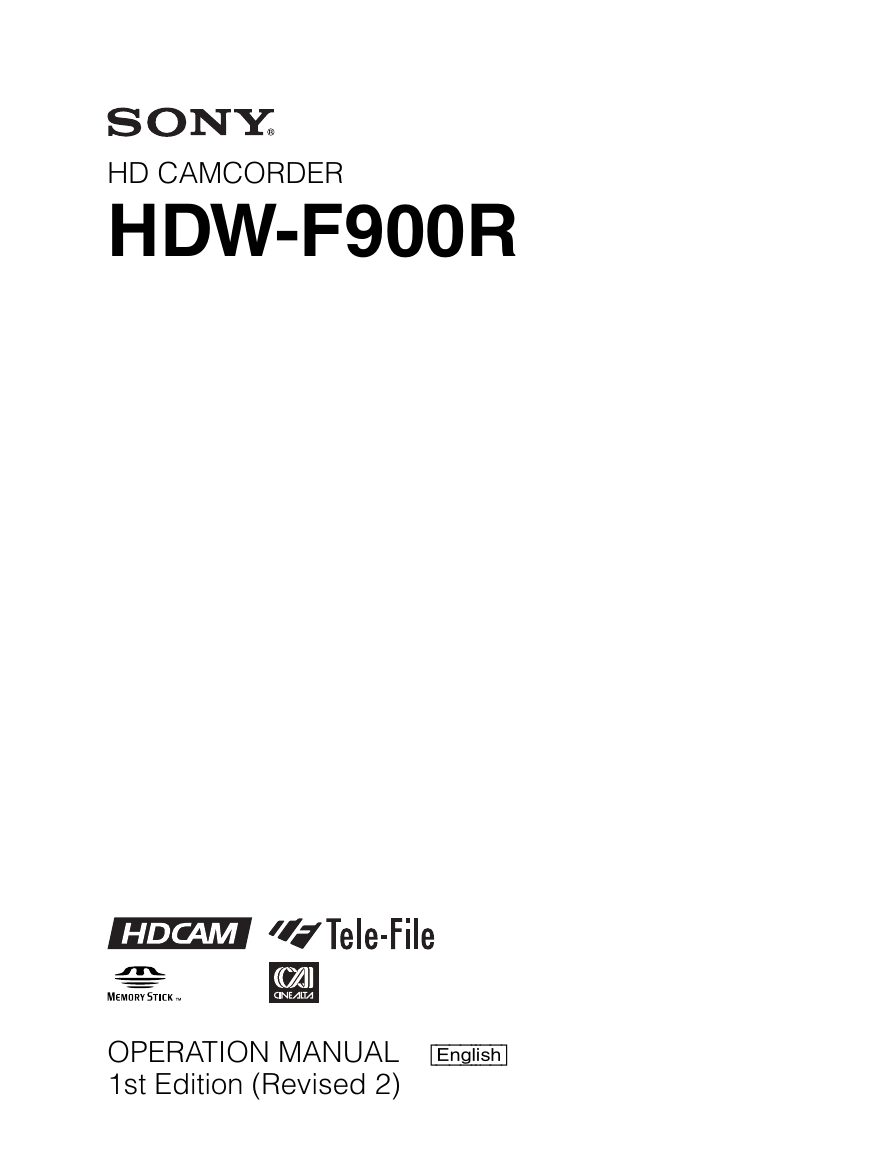

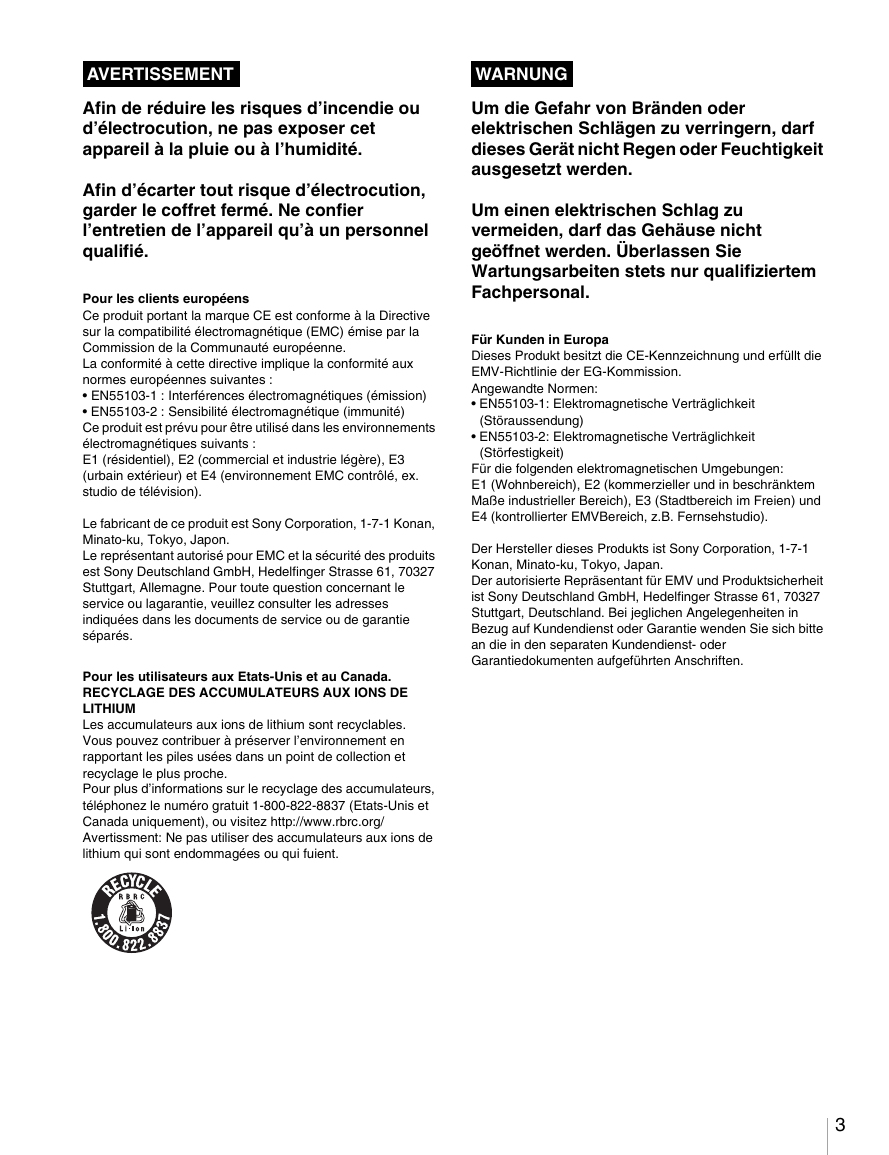
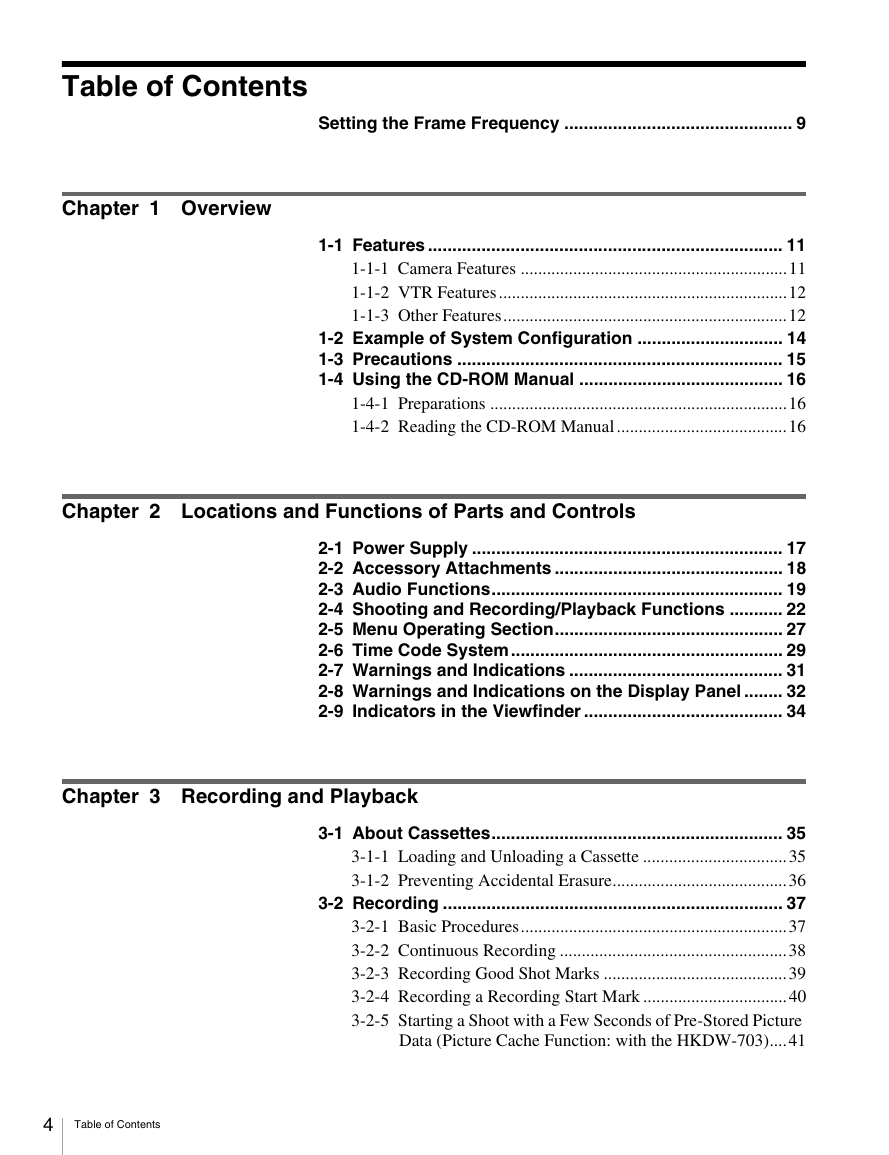

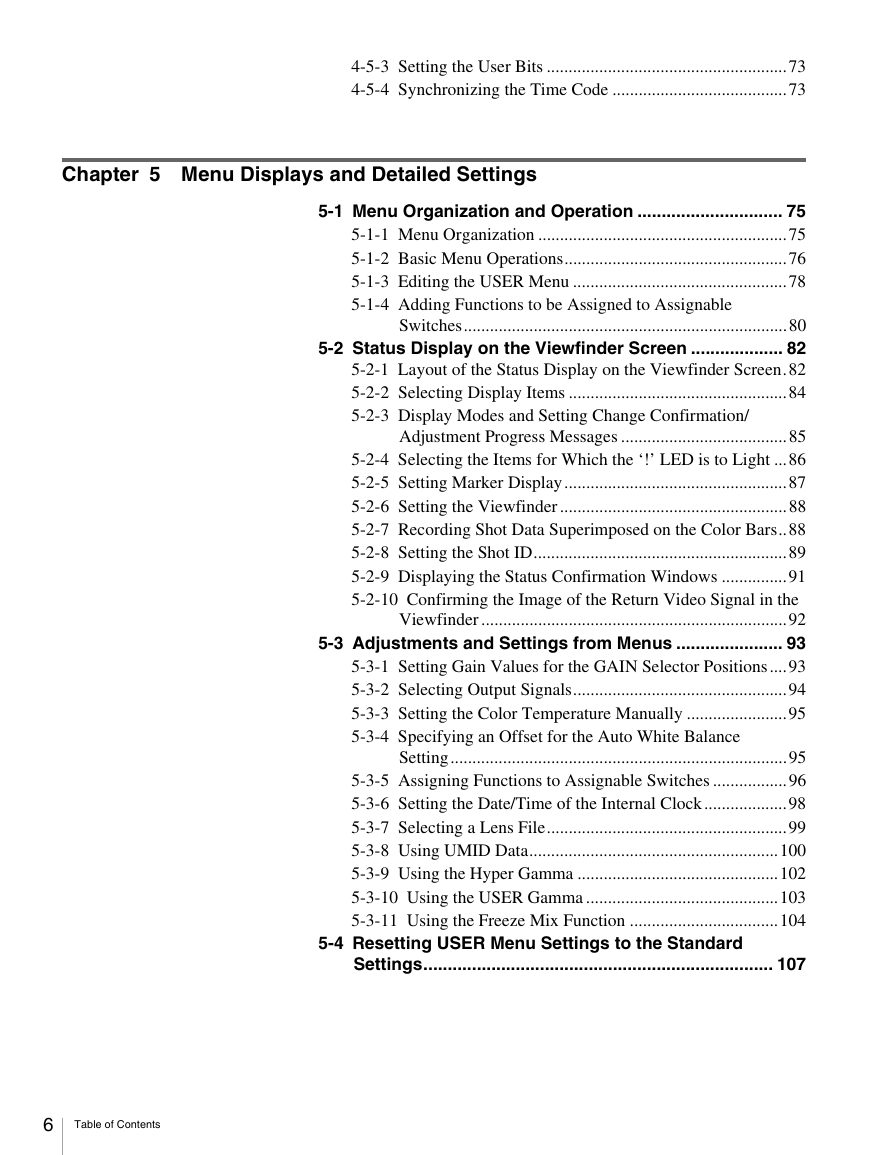
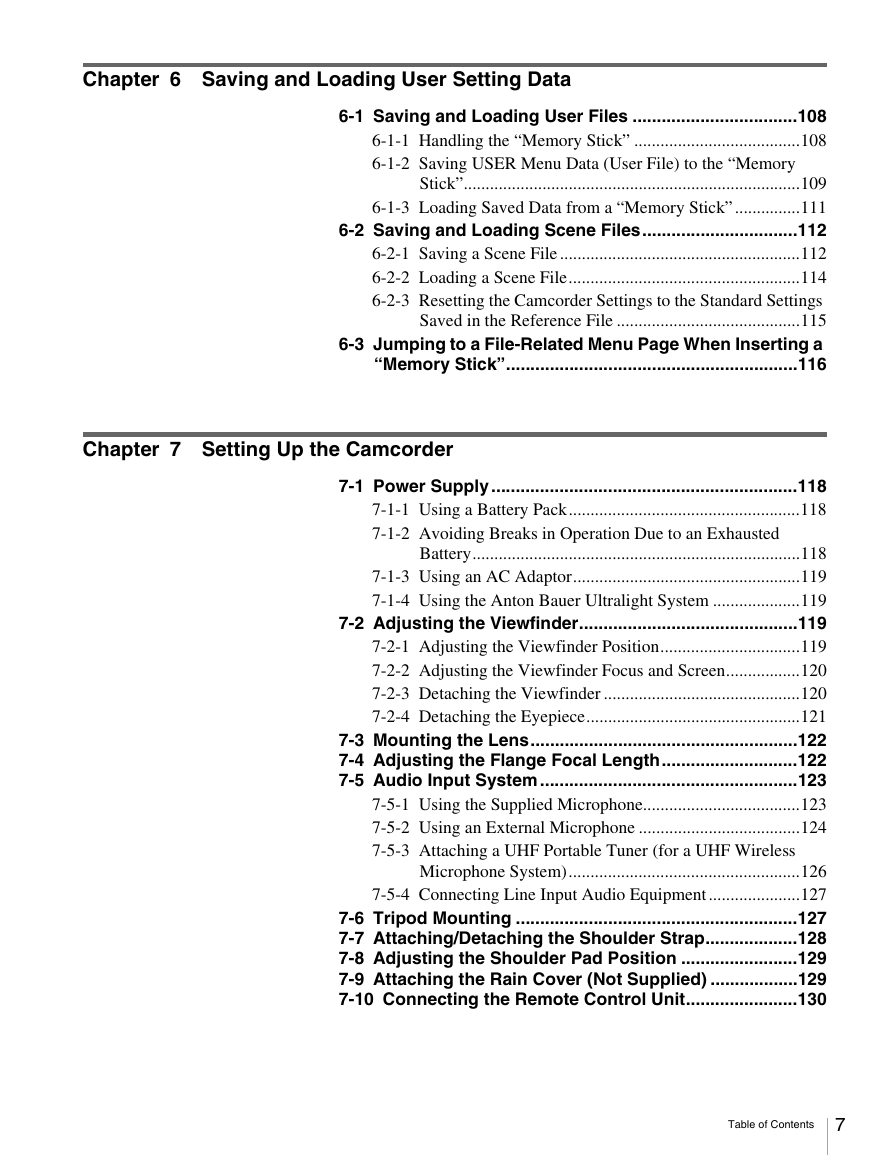
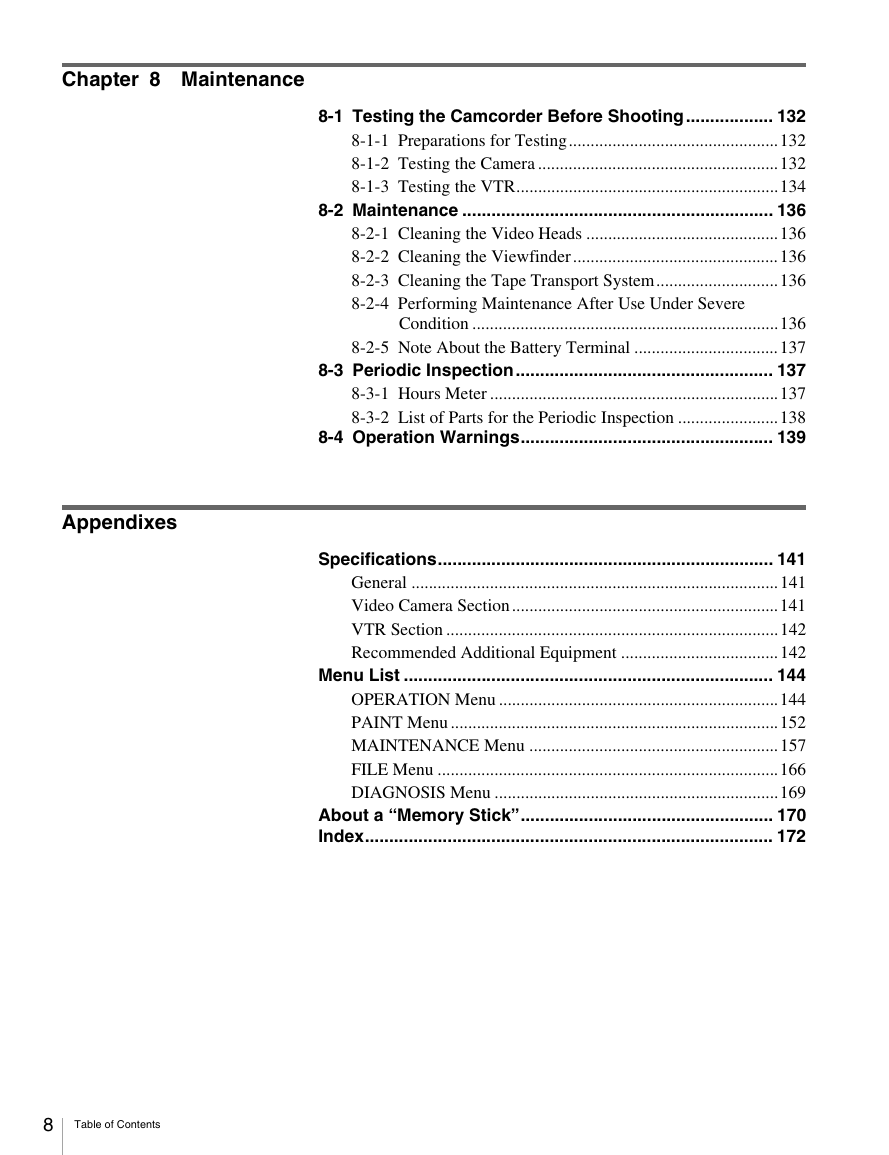








 2023年江西萍乡中考道德与法治真题及答案.doc
2023年江西萍乡中考道德与法治真题及答案.doc 2012年重庆南川中考生物真题及答案.doc
2012年重庆南川中考生物真题及答案.doc 2013年江西师范大学地理学综合及文艺理论基础考研真题.doc
2013年江西师范大学地理学综合及文艺理论基础考研真题.doc 2020年四川甘孜小升初语文真题及答案I卷.doc
2020年四川甘孜小升初语文真题及答案I卷.doc 2020年注册岩土工程师专业基础考试真题及答案.doc
2020年注册岩土工程师专业基础考试真题及答案.doc 2023-2024学年福建省厦门市九年级上学期数学月考试题及答案.doc
2023-2024学年福建省厦门市九年级上学期数学月考试题及答案.doc 2021-2022学年辽宁省沈阳市大东区九年级上学期语文期末试题及答案.doc
2021-2022学年辽宁省沈阳市大东区九年级上学期语文期末试题及答案.doc 2022-2023学年北京东城区初三第一学期物理期末试卷及答案.doc
2022-2023学年北京东城区初三第一学期物理期末试卷及答案.doc 2018上半年江西教师资格初中地理学科知识与教学能力真题及答案.doc
2018上半年江西教师资格初中地理学科知识与教学能力真题及答案.doc 2012年河北国家公务员申论考试真题及答案-省级.doc
2012年河北国家公务员申论考试真题及答案-省级.doc 2020-2021学年江苏省扬州市江都区邵樊片九年级上学期数学第一次质量检测试题及答案.doc
2020-2021学年江苏省扬州市江都区邵樊片九年级上学期数学第一次质量检测试题及答案.doc 2022下半年黑龙江教师资格证中学综合素质真题及答案.doc
2022下半年黑龙江教师资格证中学综合素质真题及答案.doc